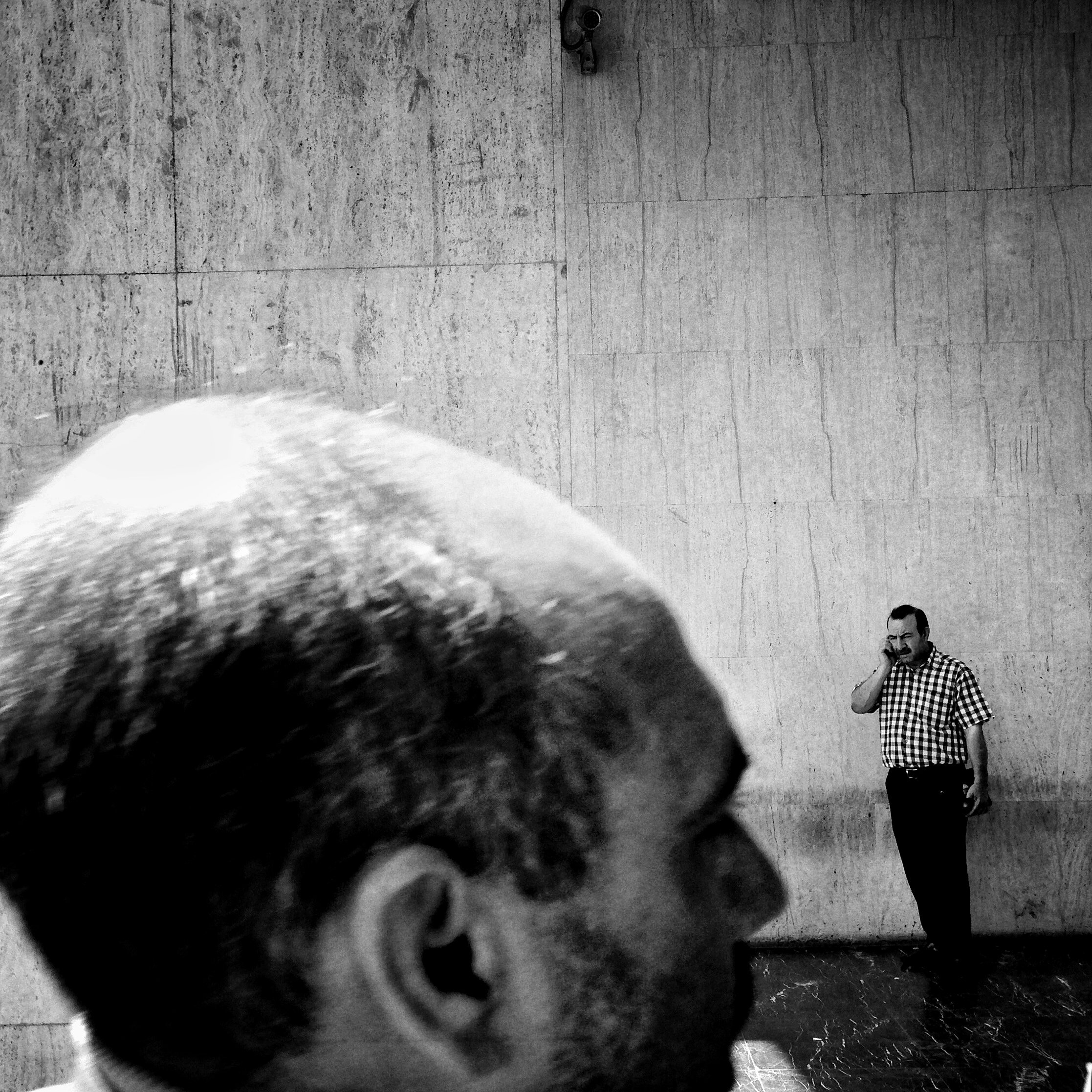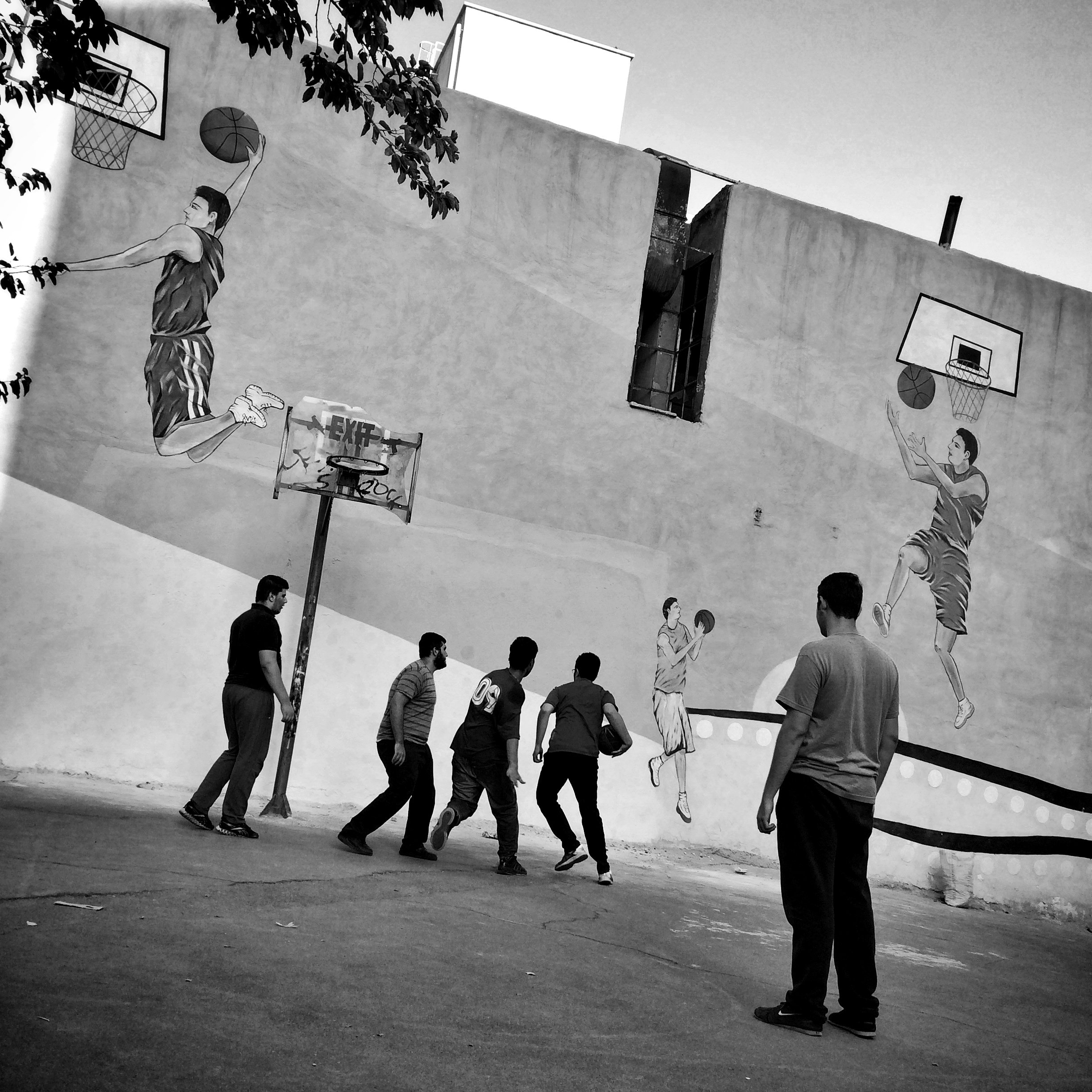These photographs, made on Tehran’s streets between 2012 and 2024, chart life stretched between promise and postponement. International sanctions—tightened after 2006 and re-imposed through successive political cycles—have eroded purchasing power, thinned shop windows, and woven uncertainty into the city’s daily rhythm.
In 2015 the Iran nuclear deal (JCPOA) sparked a brief surge of hope; people watched currency apps and news tickers as if they were countdown clocks to normalcy. Yet relief never truly landed. By 2025, new rounds of talks with the United States hover over the city like an unbroken siren—raising the specter of war while still withholding the economic oxygen everyday life needs.
Against that backdrop I walked, sometimes catching scenes on the fly, more often waiting for the decisive alignment of shadow, gesture, and architecture. Light falling across a stalled billboard, a child’s leap over a cracked curb, the mirrored glaze of a closed storefront—each frame becomes a ledger entry in a collective diary of endurance.
These pictures are not about policy; they are about people improvising dignity in its wake. Tehran’s streets reveal a population that keeps moving, keeps bargaining, keeps looking for that sliver of brightness that might announce real change—no matter how long it takes to arrive.



































































